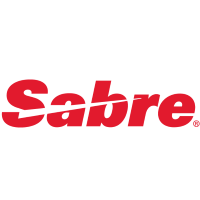Stocks To Buy Now: 5 Cheap Stocks To Buy Now In U.S.A; Stocks To Buy Now: 5 Cheap Stocks To Buy Now In U.S.A It might be difficult to find good, inexpensive stocks. There is a sizable amount to sort through. More than 1,850 stocks were listed on the major American exchanges as of the end of June, and they were all trading for $5 or less per share.
Most businesses that trade for less than $5 have at least one significant basic issue. Perhaps their sector is experiencing a severe downturn, the management incurred excessive debt, or the business was never able to achieve sustainable profitability in the first place. Investors should exercise caution while looking for deals in the realm of penny stocks because the majority of inexpensive businesses have some form of a significant problem. Stocks To Buy NowStocks To Buy NowStocks To Buy NowStocks To Buy Now
But even among the rough, there can be some gems. The first half of 2023 has been excellent for the stock market, with the Nasdaq in particular posting unprecedented gains. In the second part of the year, optimistic market circumstances might be advantageous for these cheap stocks:
1. Banco Santander SA (SAN)
Large banking group Banco Santander has its headquarters in Madrid. Banco Santander has a substantial presence in Latin America in addition to its Spanish operations, making it a diverse choice for investors looking for greater exposure to countries like Mexico, Chile, and Colombia.
Santander’s struggles during the 2008 financial crisis led investors to label the company a “bad bank.” It didn’t help that Europe’s ongoing economic issues in the 2010s persisted. However, Santander’s situation has significantly improved recently, and the improvement in Latin America’s manufacturing activity and commodities prices should result in higher earnings there as well. Santander has a sizable surplus of cash and has just begun to actively repurchase its stock. Santander shares continue to trade at less than six times forecast profits despite this year’s gain, which has seen the company rise 25% year to date as of July To Buy NowStocks To Buy NowStocks To Buy NowStocks To Buy Now
Also Ready :- Celsius crypto: Benifits Of Celsius Crypto In 2023
2. Olaplex Holdings Inc. (OLPX)
Both private customers and authorised beauticians can purchase hair care products from Olaplex. The company’s first major innovation was to switch from using retail stores for distribution to relying on e-commerce and its own website. For companies like Nike Inc. (NKE), direct-to-consumer retail has recently been incredibly successful, so it wasn’t a leap to think that Olaplex might apply similar strategy to hair products. It was functioning incredibly well for a time; for example, Olaplex saw a rise in revenue from $148 million in 2019 to $704 million in 2022. This was all lucrative growth, in contrast to many rapidly expanding businesses. Olaplex is currently available for approximately 13 times trailing profits.
But Olaplex’s profits are expected to fall in 2023, and the stock has dropped more than 70% in the last year. Observers worry that the business model could be flawed. Olaplex may be in for a significant recovery if and when growth resumes as future normalisation of buying patterns.
3. Sabre Corp. (SABR)

One of the three main international distribution networks is Sabre. Except for China, where there is a distinct market, GDS systems act as a marketplace for the display and sale of travel tickets for services including airlines, cruise lines, and passenger trains. The pandemic caused a tremendous blow to this industry, causing Sabre stock to plummet from roughly $20 to currently trade for less than $4. This was made worse by the company’s ill-advised decision to take on more debt in order to improve its information technology platform soon before COVID-19 began.
The business owes a tonne of money. However, behind the surface, the firm is an oligopoly with sound economics. Due to its balance sheet, Sabre still has a significant problem, although experts predict the company will become profitable again in 2024. Shares of troubled company Sabre may rise. This is especially true if the global travel industry’s increasing trend continues.
4. Grupo Aval Acciones y Valores SA (AVAL)
Holding business Grupo Aval Acciones y Valores is based in Colombia. Aval owns a controlling stake in four banks in Colombia. Aval’s properties collectively account for around 25% of Colombia’s banking market. Colombian banks have typically generated significant profit margins due to the comparatively low degree of local competition. The average return on equity for Colombian banks is in the mid teens, which is significantly higher than the 10% to 12% range for developed-market banks.
Colombians chose a left-leaning president in 2022, and he planned extensive economic measures that may have adversely affected Aval’s profitability. The president’s ruling alliance, however, has broken apart as a result of recent political scandals. The Colombian peso has risen as a consequence, ranking as the best-performing currency among developing markets in 2023 to date. The price of AVAL stock, which hasn’t increased as much as other Colombian stocks, is still low at approximately six times projected profits. Additionally, the business pays out sizable dividends each month for a 4.2% future return.
5. Ardagh Metal Packaging SA (AMBP)

Containers for beer, soft drinks, juices, wines, and other alcoholic beverages are produced by Ardagh Metal Packaging. It primarily operates in Europe, the US, and Brazil. In August 2021, Ardagh went public through a special-purpose acquisition company, or SPAC, which attracted investor attention because many SPACs have seen their value decline after their initial public offerings. The firm’s profit margins were thereafter under strain due to a later rise in raw material prices. The future for the corporation, though, seems to be better as inflationary pressures have started to ease. The fact that Ardagh has a lot of debt might be an issue if the economy weakens. The positive leverage might cause Ardagh’s stock price to soar in the event of a “soft landing” when earnings increase.
